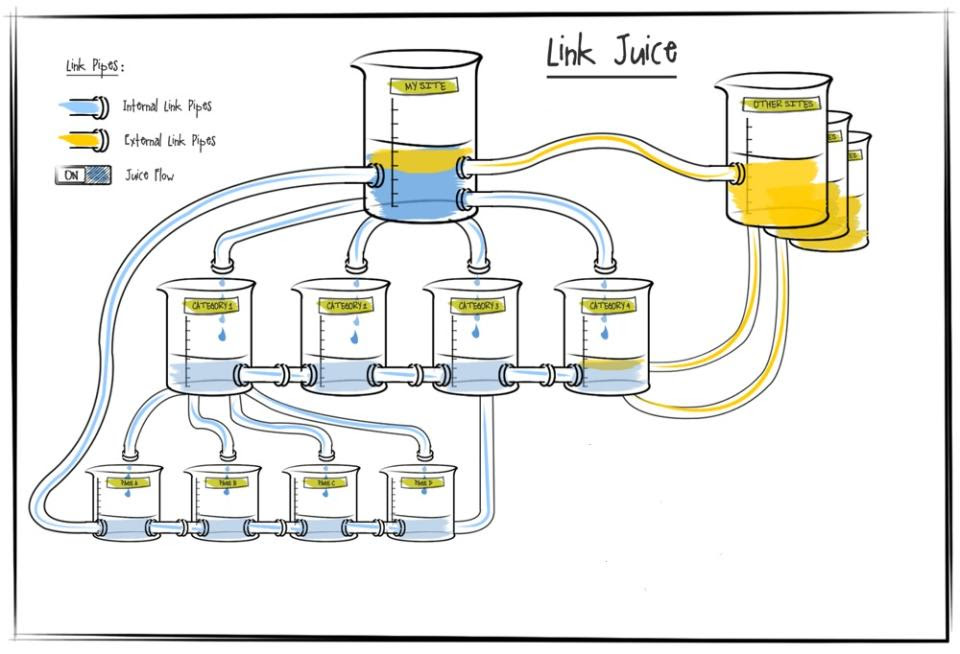In the beginning (pre-2000), all web page links were treated as equals by search engines. But then, savvy Webmasters learned how to "game the system" to outsmart the search engines, giving their sites an edge over their competitors in browser searches. Pretty soon, search engine's developed intelligence that sniffed out and stomped out the "game".

But the cat-and-mouse moves didn't end there!
A brief Linkbuilding primer
If the general public wishes to show their confidence in a politician, they cast a favorable vote in his/her favour at ballot time. And so too was the case when one website wanted to endorse another. The only difference was that they did so by voting through "links" to the favorable page. And once webmasters figured out that this strategy could be "manipulated" by exchanging backlinks in their favour, the practice was vastly abused.

When abusive Link Exchange practices were countered by search engines, in the late 1990's, as an effective site rank building strategy, Webmasters and developers were keen to get back into the game.
By the early 2000's, they "discovered" that using various popular websites, such as Directory Lists and Blogs, was an effective way to get around some of the search engine's link building restrictions. And that's when forum linkbuilding came into its own as a credible linkbuilding strategy.
Along the way though, a myriad of additional link building resources were "discovered".
An array of backlinking resources
Over the years, linkbuilding has taken a number of forms, and now provide a vast array of resources that link builders must consider when putting together their strategy. Some common backlinking resources include:

- Directory Submissions: Starting in 2001, this is a strategy where links to your pages are submitted to various directories relevant to your niche. The more credible directories that carry your link, the better your chances are of the linked site itself being considered "authoritative"
- Blog Comments: Back in 2003, when Blogs became a popular forum to express opinions and comment on trending topics, a new strategy of gaining backlinks evolved. Website owners joined blogging communities and posted comments that contained backlinks to their own sites.
Article Submissions: In 2004, the art of writing Search Engine

Optimized(SEO) articles containing backlinks, and submitting them to influential and authoritative sites, became the latest resource for backlink seekers.
- Blogroll linking: With the ever increasing popularity of blogging forums, blog owners started monetizing that popularity in 2005 by hosting links in the sidebars of their blogs.
- Paid Links: In 2006, the trend for paying webmasters for links on their sites gained popularity. This was purely a commercial phenomenon, and had no relevance to the relevance or the quality of the site requesting the backlink.
- Link Farms: In 2007, professional link building companies developed hugefarms of websites under their control, and offered backlink seekers an opportunity to link to a set number of those sites for a pre-determined fee.
Guest Blogs: The late 2000's saw the introduction of Guest Blog posting as a

great way to post SEO-enabled content and backlinks on popular blogging forums.
- Press Releases: In 2011, the Press Release became an excellent backlink building tool, through which Press Release issuers used SEO rich content to announce new products and services, and strategically included back links to their sites.
The challenge with so many backlinking options is that, for lay people ("non-techies"), they are often confusing to understand. And unless you implement them correctly, and with a lot of experience behind you, one could run the risk of failure. Some of these backlinking resources could also work at cross purposes to each other, further enhancing the risk that your linkbuilding strategy was just a big waste of time, money and effort!
Keeping up with the trends
So how does one keep up with the ever evolving trends in linkbuilding?The answer: It's pretty challenging, especially if one is not "plugged into" the constantly evolving trends in the industry. Creating an effective backlinking strategy has become even more difficult because of the rapid advance in search engine technology. And the challenges are compounded as webmasters respond to search engine advances with appropriate "workarounds"!

Over the last few years, Google (for example) has released no fewer than a dozen or so updates to its search engine page ranking algorithms, including Google Panda (2011) and Google Penguin (2012). Practically every year, new link building approaches are introduced that are different from those that proved successful the previous year. But no sooner do particular backlinking trends gain popularity, and a search engine gets wind of it, that a counter measure is introduce to nullify its impact on page ranking.
For instance, when Link Farming and Paid Links became a prevalent source for seeking backlinks, search engines introduced counter measures such as:
- Testing to see if the links were appropriate to the linked site
- Verifying whether the content between linked sites had any relevance
- Trend analysis and intelligence gathering to analyze whether the links were "genuine" or "commercially" inspired
Where links were previously assessed purely in terms of quantity, for SERP ranking purposes, each year's algorithm updates raided the threshold for how links are evaluated. Trends that worked last year would not work the next year. In fact, last year's trending backlinking strategy could (often) get a website blacklisted by a search engine next year!

